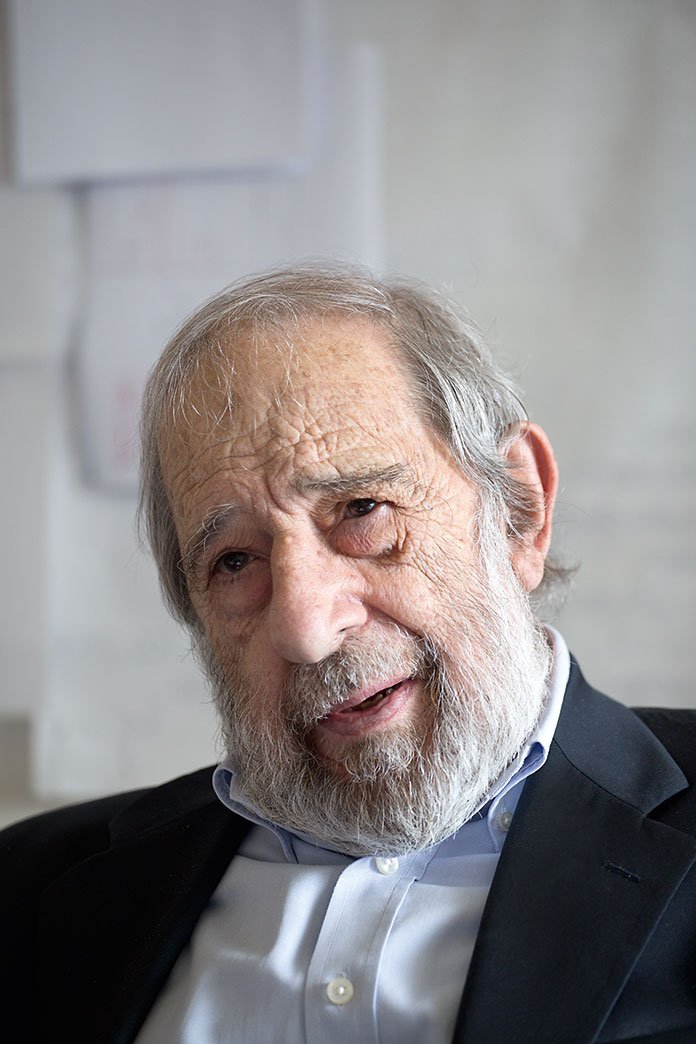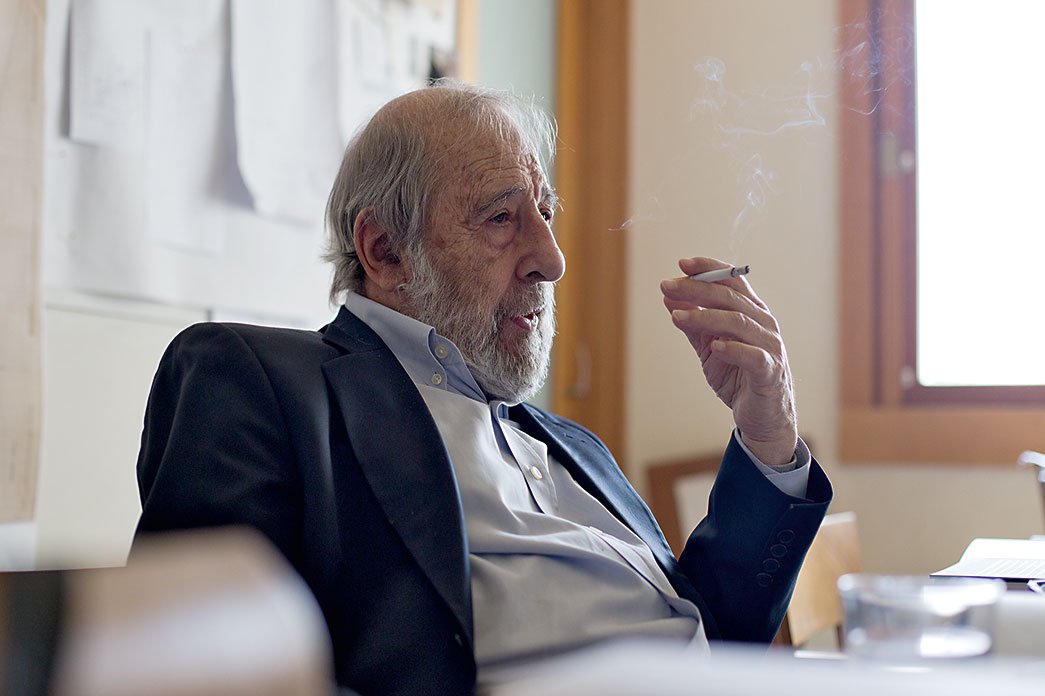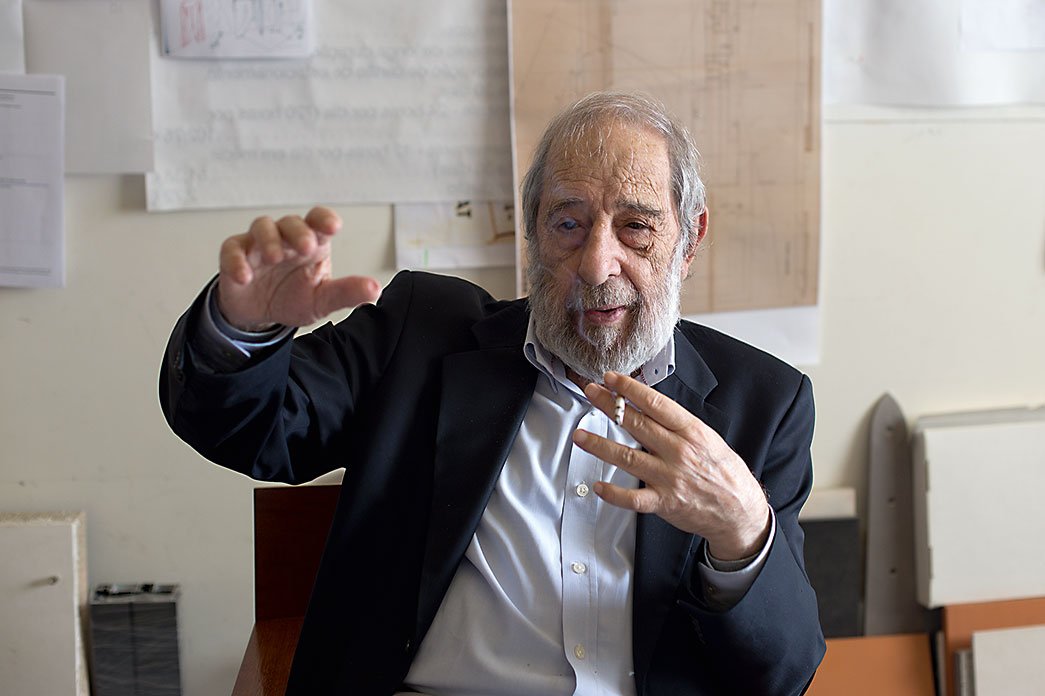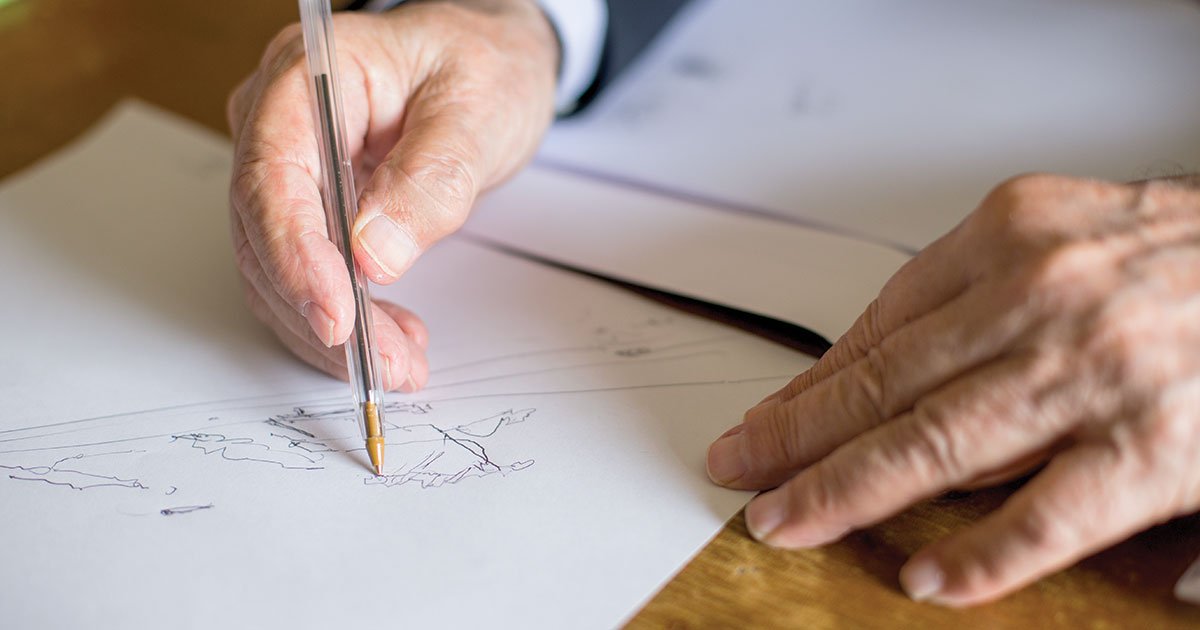How do you deal with fear?
When they give me a project, yes, I’m afraid. First of all, projects are all difficult and I am afraid of not getting engaged in them and, as a result, of having deadlines, and, therefore, what I know...
You get anxious?
Yes, a bit anxious. I make a real effort and concentrate. Concentration is fundamental and is the response to fear.
How do you deal with death?
By waiting for it (he laughs). I don’t think about it much. If you think about it a lot, it’s unpleasant while you’re living. I am much more scared about becoming useless and not dying. That’s awful. I would like to die suddenly, I think that’s a good way to go, it would be the most pleasant death (he laughs). It is very unpleasant for families, friends, it is terrible, but for the person themselves, it is the best. Losing your faculties and living for years is not the best, not least because when that happens, you never really know, not even doctors, whether the person who can no longer speak, is aware of it or not. This is what I am scared of.
«WHAT ANNOYS ME THE MOST IS TO GETTING BORED (HE LAUGHS), THAT’S WHY ON SATURDAYS AND SUNDAYS I COME HERE (THE STUDIO)»
If you were not an architect what would you be?
I wanted to be a sculptor.
A sculptor?
I started a Fine Arts course because my family, especially my father, was very worried when I told them I wanted to do sculpture. At that time! This is not the case today; then it was associated with bohemian lifestyles and poverty. My father was worried. At the fine arts school they did sculpture, architecture, painting. I ended up going to the school and ended up taking an interest [in architecture].
And sculpture?
I still do it, but it is an almost clandestine activity. It doesn't have much to do with architecture, because it’s another of these specialisation foibles. Sculpture is sculpture, painting is painting, architecture is architecture. An architect wanting to do sculpture is not very well regarded. But I do it. I recently did an exhibition in Spain.
Of your sculptures?
My sculptures and those of another sculptor. It is a foundation of a great Spanish sculptor, Alfaro, now deceased. It’s funny because they put Alfaro and Siza in the catalogue. People would pick up the catalogue and say, «these guys are crazy, they write ‘Alfaro’ instead of Álvaro», they thought it was a mistake.
What makes you laugh?
A good film. Conversations with friends, which often lead to laughter. When I am in a bad mood about something I also laugh at myself. It is a very healthy thing. And television shows and films.
And what makes you cry?
Ah, that I won’t say.
And what annoys you the most?
What annoys me the most is to getting bored (he laughs), that’s why on Saturdays and Sundays I come here (the studio). Firstly, to take stock of everything, a chart of the work, because you need to have connection between them and, then, because if I don’t do anything, I end up, as I can no longer run, sitting in a chair watching TV, and that is very depressing. It annoys me, of course. Not least because there are many bad programmes, but there are also many good programmes.
Do you still have dreams?
I do.
What do you dream about?
Sometimes about projects I’m doing, and I dream of the right solution, and the next day, when I wake up all excited, I can see it was tremendous nonsense. I often dream of people I have never seen and who appear in the dream very clear and real. A dream that I’ll never forget was one that was so incredibly real and in colour. I was driving north with friends (Távora was one of them), past the old bridge of Vila do Conde, and, suddenly we noticed a gigantic wave on the coastline and began to flee; and a yellow bus went across the road. And when I was about to die drowning, I woke up in great distress.
You made it out of that one...
That dream had a reason. Some have no reason. But this one did. When a tanker ran aground, in the Port of Leixões, before entering the port, it ended up at Castelo do Queijo, and I was coming down the rampa, in this case Avenida da Boavista, and suddenly I saw the sky ablaze with red. It was an impressive thing. The tanker burned. It was certainly the origin of my dream.
What is your favourite colour?
The favourite colour for an architect depends on the colours he will use in his project. There is no favourite colour, there is a colour you’re searching for.
Any music you like to listen to?
I like to listen to music. Again, there are some very interesting, collective periods. The music came collectively, not in large recitals. I remember the time when Brazilian music turned up in strength, Maria Betânia, Gilberto Gil...many an evening passed listening to music. Then there was a time when it was the Beatles. I bought all their records. The White Album was my favourite. Then came the phase of political influence, Paco Ibáñez, Zeca Afonso, José Mário Branco... I recall that, on the night of April 24, I was at home, with a group of friends, and I had bought Paco Ibáñez's album in Barcelona, which features songs with very revolutionary Spanish poetry, and we were listening to Paco Ibáñez until two in the morning. And around 5 in the morning one of my friends calls me and says, «turn on the radio». I thought, «this guy is crazy». I turned on the radio. They were announcing the first reports of the April 25th Revolution, when I turned it on, it was about the military marches. I soon realised what it was. Everyone understood, just because, just before, there had been a major military coup. It was imminent.
Has any film left its mark on you?
Many. At the time, when I started at university, there was the phase of neo-realistic films. They had a huge impact. Then, throughout my life, Hitchcock. The French never impressed me. I liked Aniki Bobó. And the film about Oporto, The Artist and the City, by Manuel de Oliveira. Very good.
And now a challenge.
A challenge?
With regard to what we talked about here: your memories. What would you draw on paper?
There was so much.









